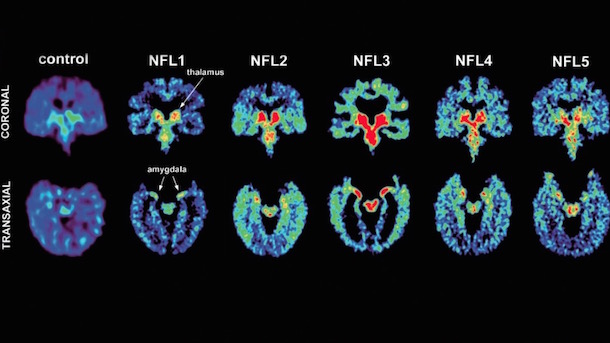
Four years ago, scientists at North Shore University Health Systems in Chicago thought they detected evidence of chronic traumatic encephalopathy, otherwise known as CTE, in a living NFL player.
However, at the time, they could not confirm nor deny the results until they preformed a postmortem examination of that player’s brain tissue.
Sadly, the player that was later identified by his family was former Minnesota Vikings standout linebacker Fred McNeill who died from ALS in 2015.
But his death could be remembered as a major breakthrough:
Evanston doctors identified CTE in a living person for the 1st time, a former Vikings linebacker who later graduated from law school but struggled to remain employed and filed for bankruptcy https://t.co/6LBR6zZFKB
— Chicago Tribune (@chicagotribune) November 16, 2017
According to the Chicago Tribune:
In a paper published last week in the journal Neurosurgery, Bailes and other researchers reported that one of the former players who underwent a scan had his brain examined after he died — and sure enough, the tissue revealed he had been suffering from CTE.
More research is needed to corroborate the result, but if it holds up, Bailes said it could be a pivotal step in finding a way to help people with the condition.
“If there’s ever a treatment developed, you can test the response to it,” he said. “If you can trust the scans, you can tell a football player he shouldn’t keep playing, or tell someone in the military he can’t (be exposed to) explosions.”
The lead author on the Neurosurgery paper is Dr. Bennett Omalu, who’s the “pioneer CTE researcher.” After McNeill’s death, Omalu said he found signs of CTE in the former Minnesota Viking’s brain tissue.
But according to Dr. Lili-Naz Hazrati, a neuroscience researcher at Toronto’s Hospital for Sick Children, regardless the technological successes, reliable CTE detection still appears far away:
She said the tissue images included in the Neurosurgery paper did not convince her that the ex-NFL player actually was suffering from CTE. Tau is associated with other neurological diseases, including Alzheimer’s, and can also be present in healthy brains, she said.
Figuring out a way to definitively diagnose CTE in a living person could go a long way in finding different forms of treatment. As for the NFL, a definitive diagnosis in a player could lead to more early retirements or could help players treat this disease.
But as Dr. Nazrati pointed out:
Scientists have yet to find biomarkers that identify Alzheimer’s — a disease that has been studied for more than a century — and CTE will likely prove no easier.
For now, the NFL will continue to work on ways to prevent head injuries.










Comments are closed.